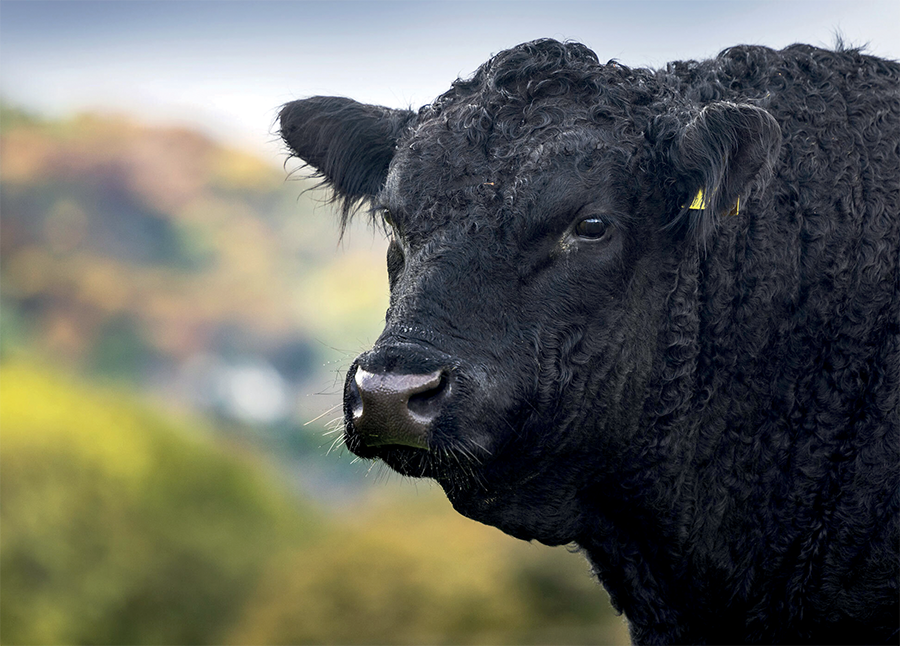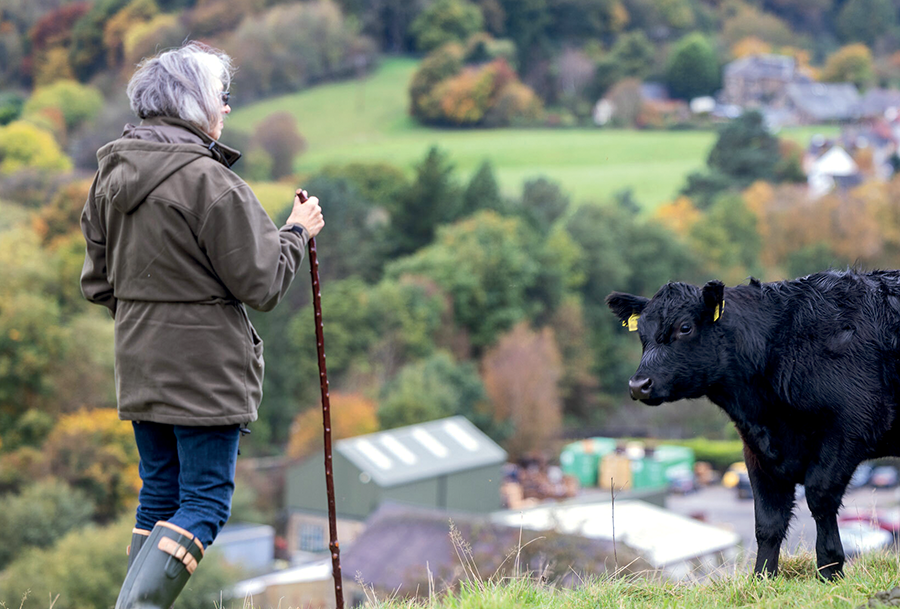Native genetics suited to regenerative farm
25th November 2023
Mary Hamnett and Gordon Oliver, who breed Aberdeen Angus cattle in the Pennines, have a simple, shared vision – to help farmers reduce feed and labour costs and produce quality beef from grass.

The couple have been breeding Aberdeen-Angus cattle for some four decades at Upper Waterside Farm nestled in the Goyt Valley of the Pennines and many of the breed’s descendants can be traced back to their herd.
They believe the original native type of Aberdeen-Angus are ideally suited to regenerative, organic farms like their own. The pair run 40 breeding cattle on 212 acres of hill ground with cattle finished on a forage-only diet.
Original population native Aberdeen-Angus were declassified from critically endangered to endangered by the Rare Breeds Survival Trust. They date back to the formation of the original Aberdeen-Angus in the first herd book.
They have a smaller bone-to-meat ratio and have great depth of body which make them ideal foragers.
“The native type of Aberdeen-Angus went out of fashion in the eighties and nineties because farmers were encouraged to produce bigger cattle for export to Europe and native cattle did not easily reach the minimum weight required,” Gorgon says.
But the recent change in government direction towards “public goods”, as well as changing consumer buying habits favouring smaller cuts of beef, firmly places native Aberdeen-Angus cattle back amongst the front runners of UK beef breeds, they believe.
Rebuilding a native herd
Joining the Aberdeen-Angus Cattle Society in 1986, Mary and Gordon were unaware that there were very few pure natives with non-imported bloodlines left. Secretary Bob Anderson recognised the native Aberdeen-Angus were on the brink of extinction and wrote to breeders in the 90s, which alerted the couple to the fact that they had native bulls and native cows.
As a result, the Rare Breeds Survival Trust (RBST) placed native Aberdeen-Angus on its critical watchlist, and a separate section herd book was started in 2002.
“At that point, 51 females had been found in previous volumes dating from 1981–2001. Many of these were inactive or had been put to a non-original population bull. We were lucky to own 12 on that list.
“There were only seven breeding females and three bulls registered in the 2002 herd book,” Mary says.
The couple have worked tirelessly to preserve these bloodlines. In fact, half of their herd of 40 breeding cows currently comprises native Aberdeen-Angus with the others being phased out as they retire from production.

Founding the herd
The native Aberdeen-Angus cattle at Upper Waterside were founded with genetics from the Boghall herd dispersal. Today, the herd is predominately descended from Rashiehall Cherry Bee E19, purchased at the sale alongside Evorela of Haymont. Evorela bred the bull, Evan of Champagne, which has been used extensively as a herd sire.
In the 2000s, the bull Kingswood Eureka was purchased from Mike Spooner in Oxfordshire and later, four of his half-sisters were bought with their Eulima genetics still present today.
Mary and Gordon admit breeding has been more challenging because of the small numbers with the bloodlines but are lucky to have a good bank of semen in their AI flask alongside semen sourced through the RBST to draw from.
All the natives now in existence from the Cherry Bee families in the UK are decedents of their foundation cow, Cherry Bee E19, and in the last three years Mary and Gordon have sold 40 breeding females into Scotland and England to help establish further native Aberdeen-Angus herds.
Management of the herd
One of the attractions of the breed is undoubtedly its ability to thrive off grassland without concentrates, they believe.
At Upper Waterside, cows and calves are turned out into three groups onto hill ground in April. Steers remain outdoors until finishing. The remaining stock is housed in November or December and calves weaned the following February to give the cows one month to recover before they calve again. Steers are finished off grass on higher ground by 30 months and typically grade R4L with cattle sold for a premium to Dovecote Park.
Grassland is permanent pasture with no ploughing carried out since the Second World War and comprises of indigenous species of grass, plantain, and clovers. “Some fields contain over 100 different species,” says Gordon.
Meadows are cut for hay during the summer to provide forage for the winter.
Mary and Gordon’s aspirations are beginning to be realised with demand for the breed continuing to grow. Mary adds: “They make very good commercial cows. They are easy calving, low-input and are good-natured and they are well-suited to farms in stewardship.”
Read more livestock articles here
